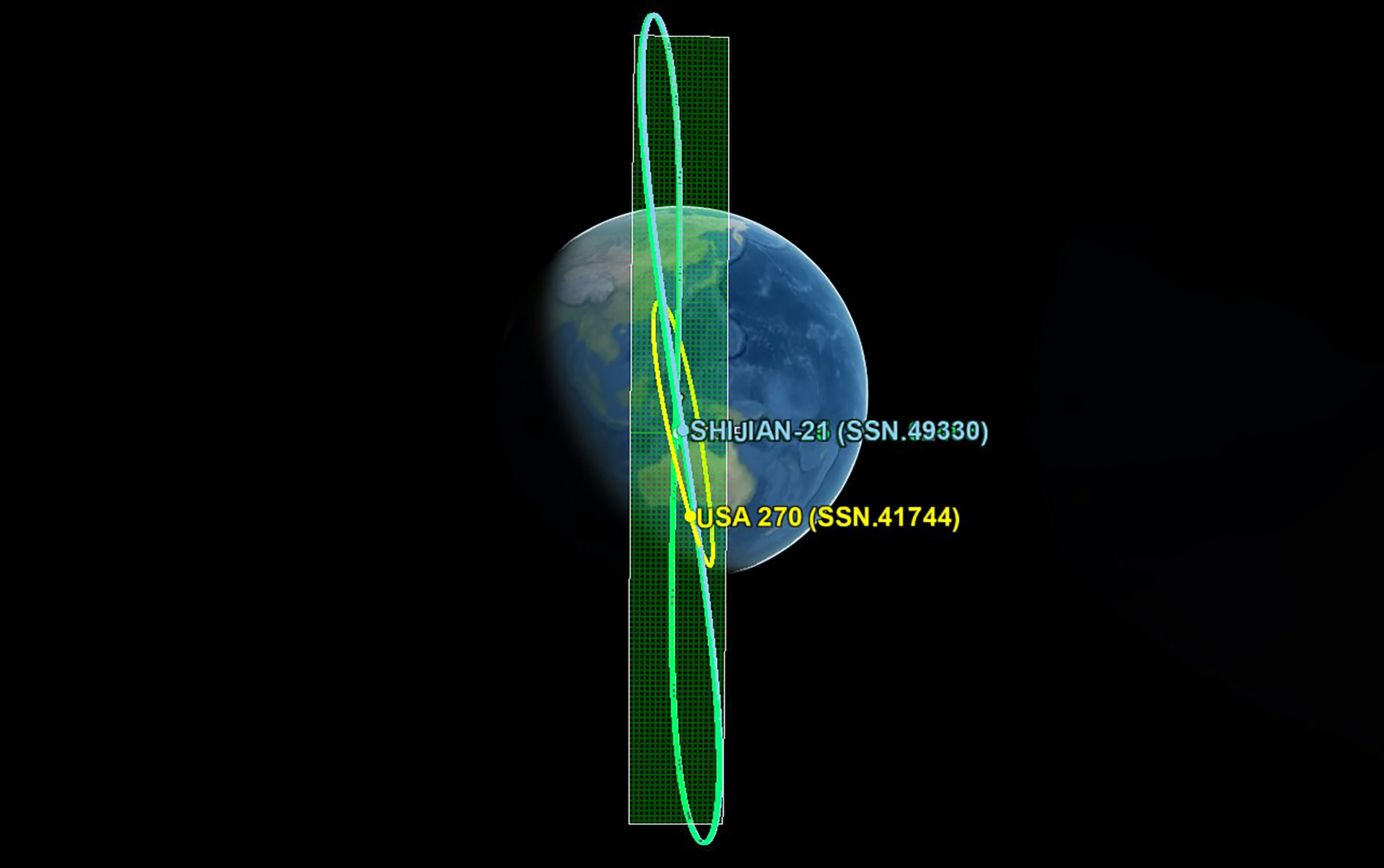By Liu Zhen
China’s first satellite-to-satellite refuelling test appears to be imminent after a second round of close-proximity operations between two probes in high orbit on Monday.
The landmark Chinese mission will be one of the most ambitious attempts at autonomous satellite servicing in geostationary orbit, which rival the United States has yet to achieve.
On Monday, the Shijian-21 and Shijian-25 spacecraft – both orbiting at an altitude of 35,786km (22,236 miles) above the equator – came within extremely close range after days of closing in on each other, according to Swiss space surveillance firm s2a Systems.
The optical tracking image shows the two satellites nearly indistinguishable from each other, suggesting they may be about to attempt docking and potentially even conduct the refuelling and servicing test that is the primary mission of the Shijian-25.
The two satellites had a similar encounter on June 13, when they reportedly came within 1km of each other before separating 90 minutes later. That manoeuvre could have been a rehearsal for docking, or an aborted attempt at docking, according to US-based space situational awareness software company COMSPOC.
The Shijian-25 was designed to test “on-orbit refuelling and satellite life-extension technologies”, Chinese state media reported when the probe was launched in January. It said the mission aimed to verify capabilities for maintaining and prolonging the operational lifespan of satellites already in orbit as a way to reduce costs, improve sustainability and to help address growing concerns over space debris.
The satellite has been drifting towards the Shijian-21 and is expected to use its robotic arms to latch onto the latter and replenish its fuel.
US surveillance satellites USA 270 and USA 271 have manoeuvred into position to monitor the event, flanking the Chinese probes since early June, according to COMSPOC.
The Shijian-21 was launched in 2021 and used up much of its own propellant in 2022 to pull a defunct BeiDou navigation satellite from geostationary orbit and into a higher “graveyard” orbit.
Both satellites were developed by the Shanghai Academy of Spaceflight Technology, a subsidiary of state-owned China Aerospace Science and Technology Corporation. They have nearly synchronised orbits and are primed for rendezvous and docking, according to public tracking data from the US military’s Space-Track.org website.
Satellite-to-satellite refuelling in high orbit presents extraordinary technical challenges such as precise autonomous docking between free-flying spacecraft and difficult fluid transfer in microgravity conditions.
Nasa’s similar OSAM-1 – On-orbit Servicing, Assembly and Manufacturing 1 – mission was cancelled in 2023 after years of delays and technical challenges. DARPA, or the Defence Advanced Research Projects Agency, carried out a flight demonstration in low-Earth orbit in 2007 known as Orbital Express, which was successful but less complex.
Should the refuelling and servicing be successful, the Shijian-21 – designed as an “experimental validation of space debris mitigation technology” – could continue serving as a space tug, a role that has sparked concern in the US since it could have anti-satellite potential for military purposes.
